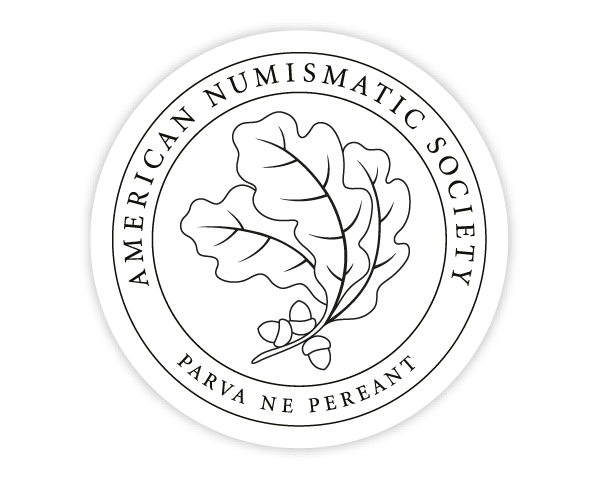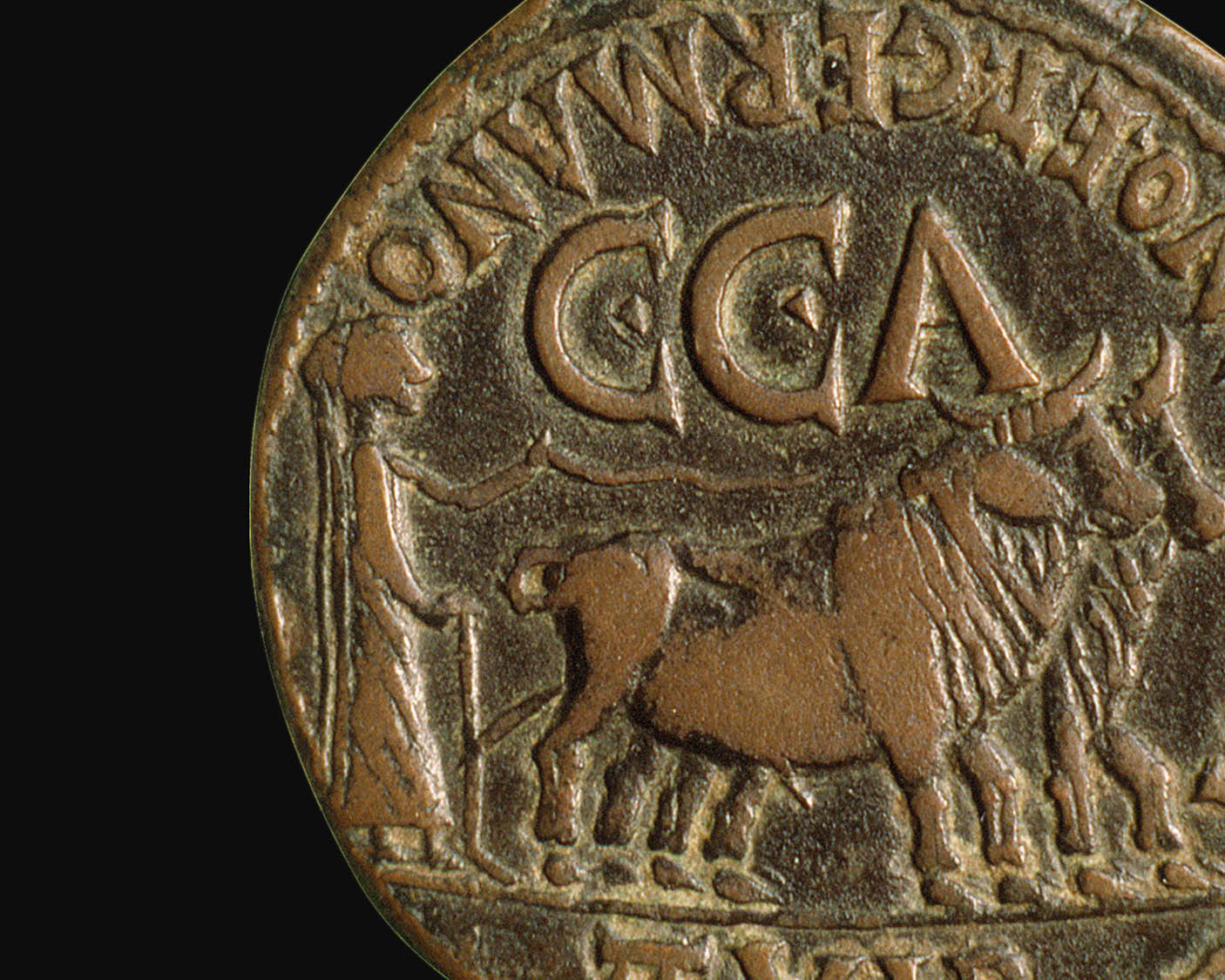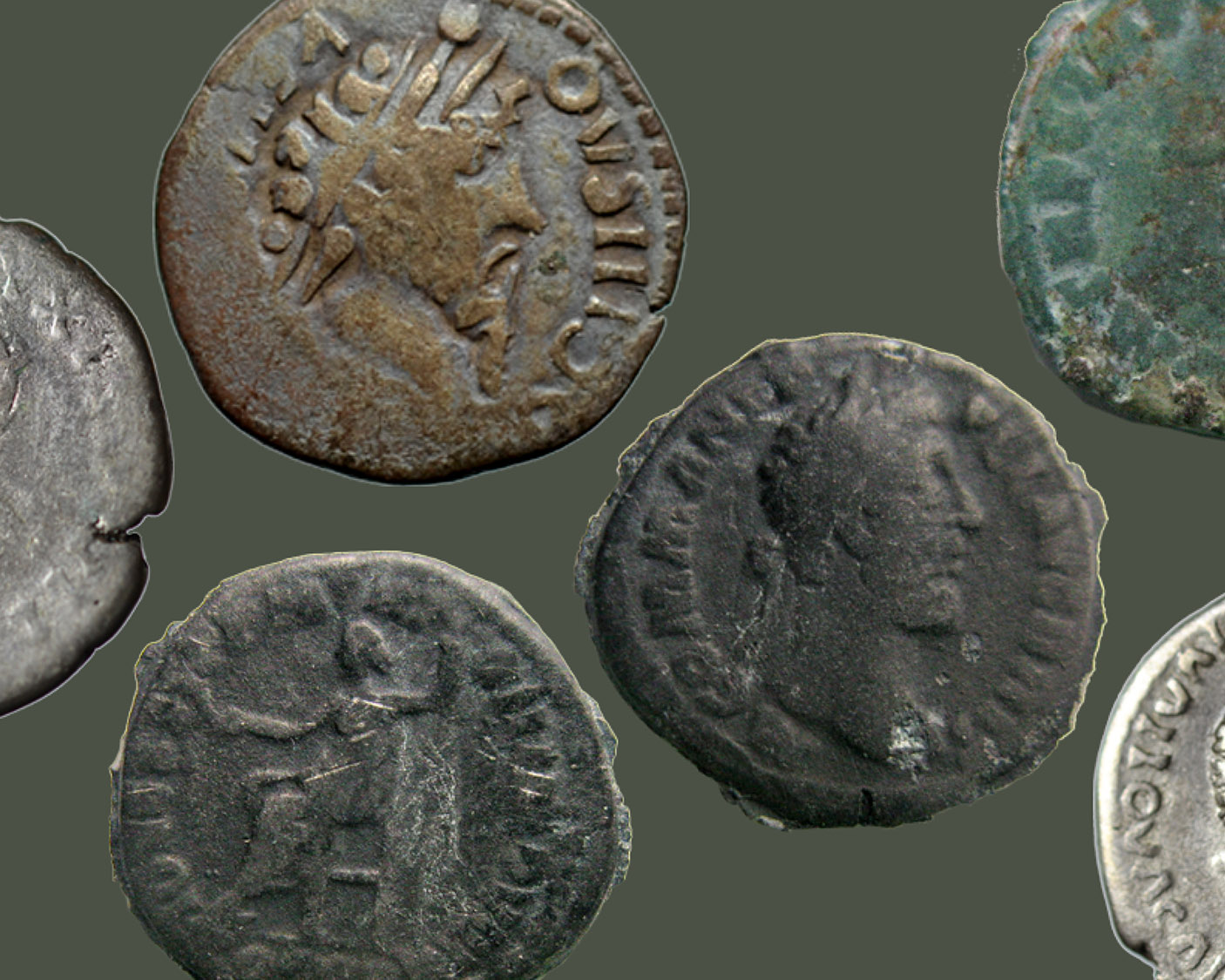U.S. Treasures of the American Numismatic Society
Return to Drachmas, Dubloons, and Dollars homepage
Great rarities of United States coinage owned by the American Numismatic Society include a gold doubloon produced by Ephraim Brasher of New York in 1787, an 1804 silver dollar, a Confederate half dollar, and an ultra-high-relief 1907 double eagle as designed by Augustus Saint-Gaudens.
The Work of Ephraim Brasher
Ephraim Brasher (1744-1797) was a well-respected New York gold- and silversmith of Dutch heritage. Brasher also assayed, or assured the quality of many foreign coins circulating in the United States in the late 18th century. In 1790, Brasher had a house at 5 Cherry Street in lower Manhattan, where he was George Washington’s neighbor.
The sequence in which Brasher produced his coins is unclear. Perhaps in 1786, Brasher created at least two gold doubloons that copied the style of coins struck in 1742 in Lima, Peru. In 1787, he made at least eight more gold doubloons and a gold half doubloon in which a wholly new style that celebrated both New York State and the new nation of which New York was now a part. One of the doubloons is on display here. In February of 1787, Brasher and a colleague petitioned the New York legislature for a contract to strike copper coins, but the state declined their request. While it is unknown whether or not Brasher intended his new doubloons as a model for any copper coinage, they do show elements that he might have used had he won the contract.
New York gold doubloon pattern (1787) by Ephraim Brasher with “EB” countermark. The obverse (“heads”) depicts the sun rising over three mountains beyond an ocean and bears the legend “NOVA EBORACA COLUMBIA EXCELSIOR.” Nova Eboraca Columbia is Latin for “New York in America” and excelsior means “ever upward.” The reverse depicts a heraldic eagle and bears the legend “UNUM E PLURIBUS.”
Spanish gold 8 escudos (1715) of Philip V (1700-1746) from Lima, Peru. The Peruvian 8 escudos piece, also known as a doubloon, circulated widely in the United States in the 1780s.
British gold half guinea (1760) of George III (1760-1820). The central plug is stamped with Brasher’s initials. In 1792, Brasher conducted the annual inspection of foreign gold. The plug may have been added then or for a private client.
Portuguese gold half joe (1756) of Joseph I (1750-1777) from Rio de Janeiro, Brazil. Brazilian gold was common in the Caribbean in the 18th century but was frequently clipped. The “IW” in the center and “G” around the edge and “IH” legitimized the coin for use in Grenada and Trinidad.
The 1804 Dollar
The 1804 Dollar is among the most prized U.S. coins ever made. Its interest stems from its rarity—only 15 survive—and from long-standing confusion about its origins. It is currently believed that in 1834 and 1835 the U.S. Department of State requested complete coin sets as diplomatic gifts. Mint records showed that dollars were last struck in 1804 and 1805, but because so few were produced, 1803 dies were re-used. The gift sets, however, included 1804 dated dollars produced from dies made in 1834. Thereafter, more so-called 1804 dollars were struck, primarily for sale to collectors, who had become aware that only a few existed.
Silver dollar (dated 1804) depicting a draped bust of Liberty and a heraldic eagle, designed by Robert Scot and engraved by William Kneass in 1834-1835. This coin belongs to the group made for collectors, probably at some point in or after 1858. 1804 dollars have inspired many stories and this piece was said to have belonged to a freed slave; however, there is no corroborating evidence.
The Confederate Half Dollar
By March of 1861, the U.S. Branch Mint in New Orleans was under direct Confederate control. In April, the Confederacy produced silver half dollar and gold 20 dollar coins with Union dies. At about the same time, four pattern halves were made that combined the seated Liberty found on Union dies with a new image—the coat of arms of the Confederacy. These proofs were presented to the Confederate government, Professor J.L. Riddell of the University of Louisiana, Dr. E. Ames of New Orleans and the Chief Coiner, B.F. Taylor. Jefferson Davis, the Confederate President, possessed the government’s specimen until it was confiscated from his wife at the end of the war. The specimen on display here is the one first owned by B.F. Taylor. The half dollars never entered circulation, and their production ceased at the end of April 1861.
Confederate States of America silver half dollar (1861), depicting seated Liberty from a U.S. die and the coat of arms of the Confederate States, surmounted by a cap of liberty. This is one of four such patterns ever struck.
U.S. silver half dollar (1861-O) produced at the New Orleans Branch Mint using the very same obverse die as that used for the Confederate half dollar. A close inspection of both coins reveals the same small line above Liberty’s head caused by a crack in the die.
The work of Augustus Saint-Gaudens
In 1905, President Thedore Roosevelt (1901-1909), believing that contemporary U.S. coin design was “atrociously hideous,” invited the famed sculptor and personal friend Augustus Saint-Gaudens (1848-1907) to create a more fitting coinage. Roosevelt was a great admirer of the high relief of ancient Greek coins and desired to see the equivalent workmanship on U.S. coins. Saint-Gaudens did not disappoint. His designs for the 1907 10 dollar “eagle” and the 1907 20 dollar “double eagle” both rank among the masterpieces of 20th-century coin design. Approximately twenty-four of the 20 dollar coins were struck as patterns and each one required nine strikes to bring out the exceptionally high relief that makes this design so attractive. The Chief Engraver at this time, Charles Barber, who was also jealous of Saint-Gaudens’ favor with the president, dramatically reduced the high relief for the circulating version of the coin. Saint-Gaudens died in 1907 before any coins based on his designs were put into circulation.
Macedonian gold distater of Alexander the Great (356-323 BC) from Amphipolis, depicting Athena wearing a crested helmet and Nike, the Greek goddess of victory.
Gold 10 dollar “eagle” (1907) designed by Saint-Gaudens, depicting Liberty wearing a feathered headdress and an eagle. Liberty wears a Native American headdress but is modeled after the Greek goddess Nike.
Gold 5 dollar “half eagle” (1908) with a portrait of a Native American chief and an eagle standing on a bundle of arrows entwine with an olive branch. The unique “sunken-relief” design by Bela Lyon Pratt (1867-1917) was inspired by the technique of ancient Egyptian art.
Gold 20 dollar “double eagle” pattern (1907) in ultra-high relief designed by Saint-Gaudens, depicting Liberty standing, holding a torch and an olive branch. On the reverse, an eagle flies and the sun rises. Following Saint-Gaudens’ death in 1907, Charles Barber, Chief engraver at the U.S. Mint, reduced the level of relief for the circulating versions.
Gold 20 dollar “double eagle” (1913) in “sand-blast” proof showing the great degree to which Saint-Gaudens’ original ultrahigh relief was reduced by Barber. A sand-blast proof is produced by blowing minute particles of sand against the coin’s surface.
Return to Drachmas, Dubloons, and Dollars homepage
Other pages of the exhibit:
[posts_grid columns=”4″ rows=”6″ order_by=”date” order=”ASC” meta=”no” link=”yes” category=”DrachmasDubloonsDollars”]




